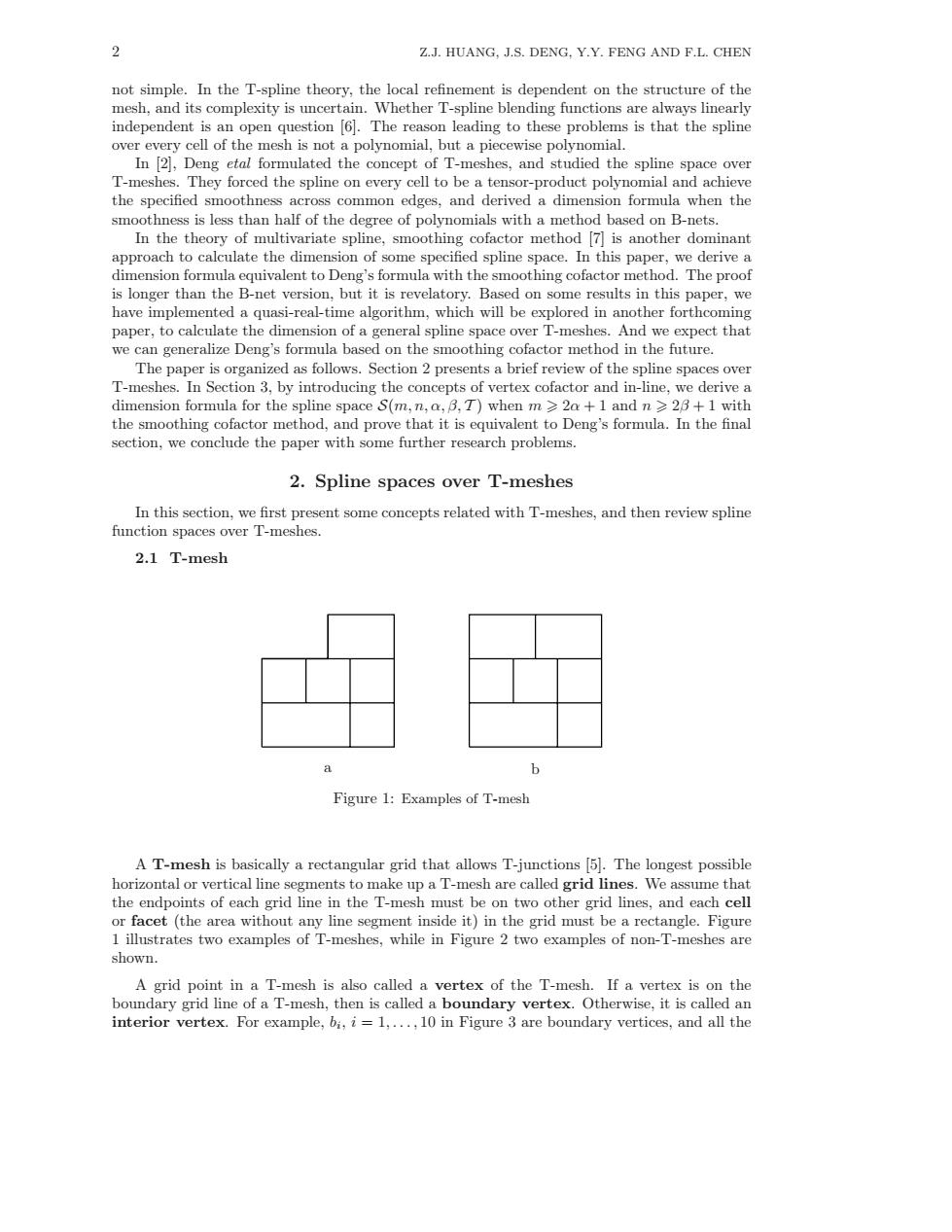正在加载图片...

ZJ.HUANG,J.S.DENG.Y.Y.FENG AND F.L CHEN " 2.Spline spaces over T-meshes 2.1 T-mcah pige上 2 Z.J. HUANG, J.S. DENG, Y.Y. FENG AND F.L. CHEN not simple. In the T-spline theory, the local refinement is dependent on the structure of the mesh, and its complexity is uncertain. Whether T-spline blending functions are always linearly independent is an open question [6]. The reason leading to these problems is that the spline over every cell of the mesh is not a polynomial, but a piecewise polynomial. In [2], Deng etal formulated the concept of T-meshes, and studied the spline space over T-meshes. They forced the spline on every cell to be a tensor-product polynomial and achieve the specified smoothness across common edges, and derived a dimension formula when the smoothness is less than half of the degree of polynomials with a method based on B-nets. In the theory of multivariate spline, smoothing cofactor method [7] is another dominant approach to calculate the dimension of some specified spline space. In this paper, we derive a dimension formula equivalent to Deng’s formula with the smoothing cofactor method. The proof is longer than the B-net version, but it is revelatory. Based on some results in this paper, we have implemented a quasi-real-time algorithm, which will be explored in another forthcoming paper, to calculate the dimension of a general spline space over T-meshes. And we expect that we can generalize Deng’s formula based on the smoothing cofactor method in the future. The paper is organized as follows. Section 2 presents a brief review of the spline spaces over T-meshes. In Section 3, by introducing the concepts of vertex cofactor and in-line, we derive a dimension formula for the spline space S(m, n, α, β, T ) when m 2α + 1 and n 2β + 1 with the smoothing cofactor method, and prove that it is equivalent to Deng’s formula. In the final section, we conclude the paper with some further research problems. 2. Spline spaces over T-meshes In this section, we first present some concepts related with T-meshes, and then review spline function spaces over T-meshes. 2.1 T-mesh a b Figure 1: Examples of T-mesh A T-mesh is basically a rectangular grid that allows T-junctions [5]. The longest possible horizontal or vertical line segments to make up a T-mesh are called grid lines. We assume that the endpoints of each grid line in the T-mesh must be on two other grid lines, and each cell or facet (the area without any line segment inside it) in the grid must be a rectangle. Figure 1 illustrates two examples of T-meshes, while in Figure 2 two examples of non-T-meshes are shown. A grid point in a T-mesh is also called a vertex of the T-mesh. If a vertex is on the boundary grid line of a T-mesh, then is called a boundary vertex. Otherwise, it is called an interior vertex. For example, bi, i = 1,..., 10 in Figure 3 are boundary vertices, and all the��